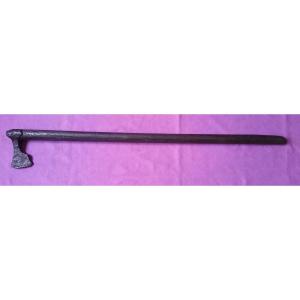The wooden stock is most probably later, but it seems indeed very old. The lenght macthes with a use as a war axe, as shown by the latest archeological discoveries:
The stocks of the Viking war axes were always strictly straights, and quite long. Dimensions found untill today vary beetween 78 cm (Oseberg sepulture) ans 110 cm (11th century axe found in river Voma) . That lenght allowed to hurt an ennemy who was welding a sword.
The orientation of the blade in relation with the stock is charachteristic of a war axe, and not of a tool axe.
The blade is an exemple of the "D" type from Kim Hardjar & Vegard Vike's classification of viking axes.
The cutting edge is a little bit thickened, as if it had been used several times to knock against metal which would have caused this deformation.




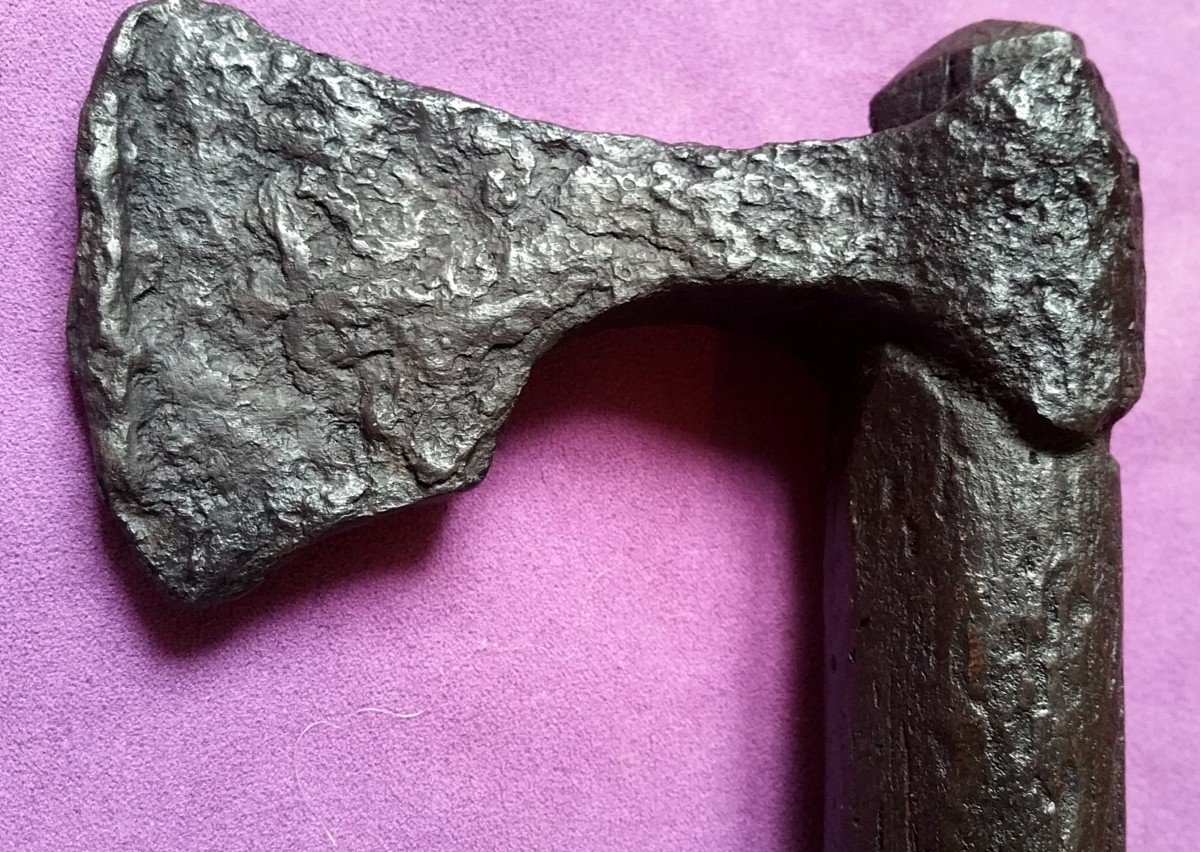
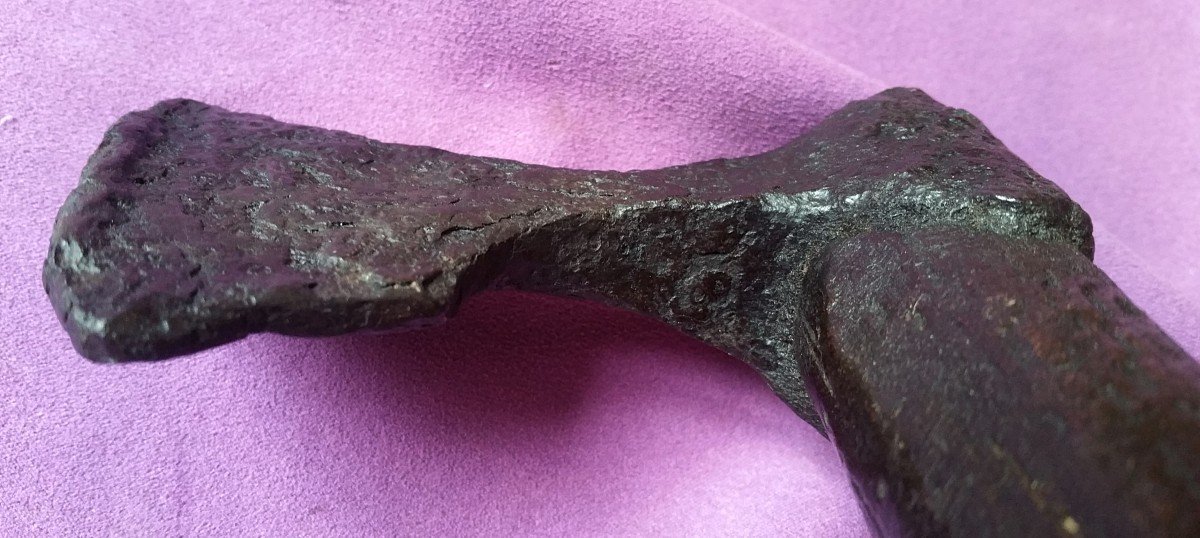



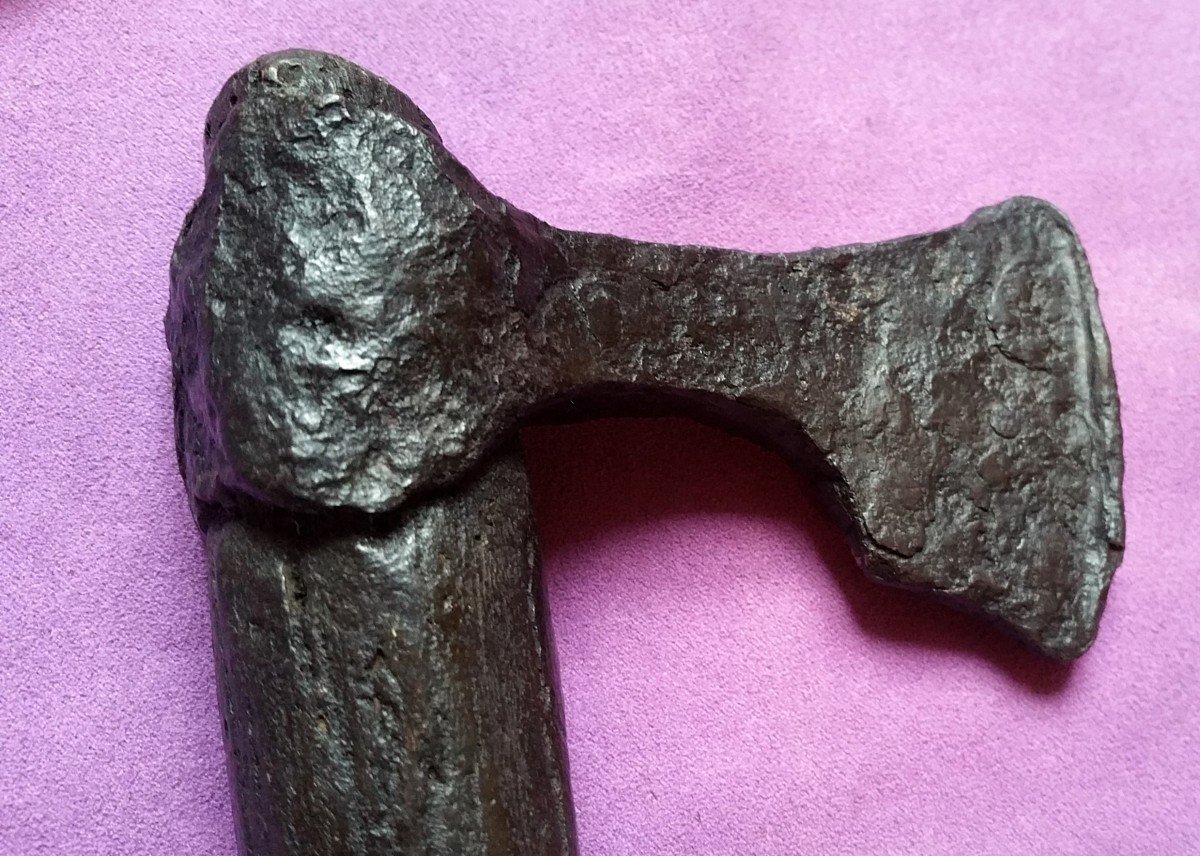

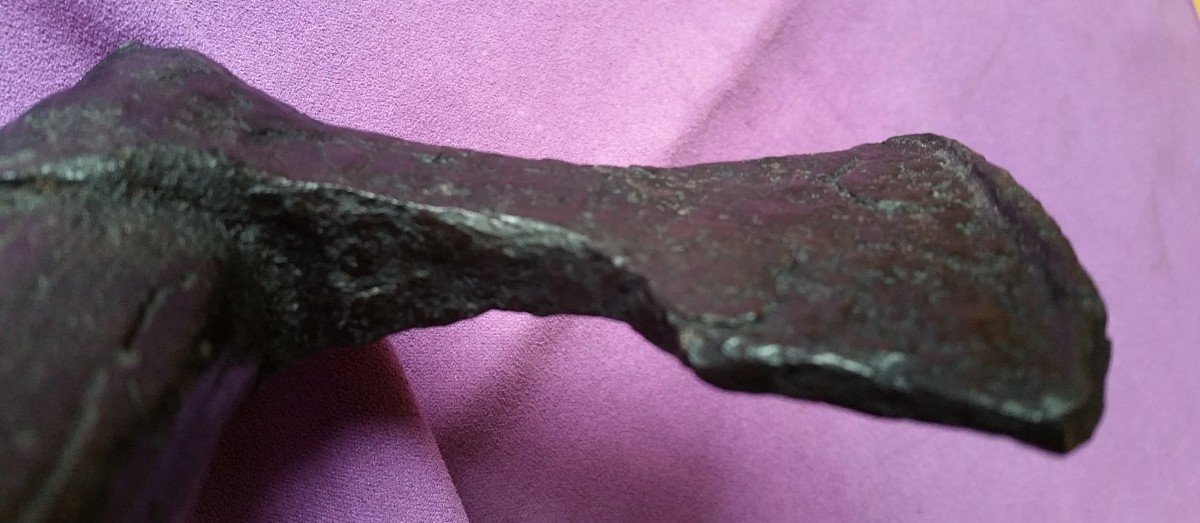
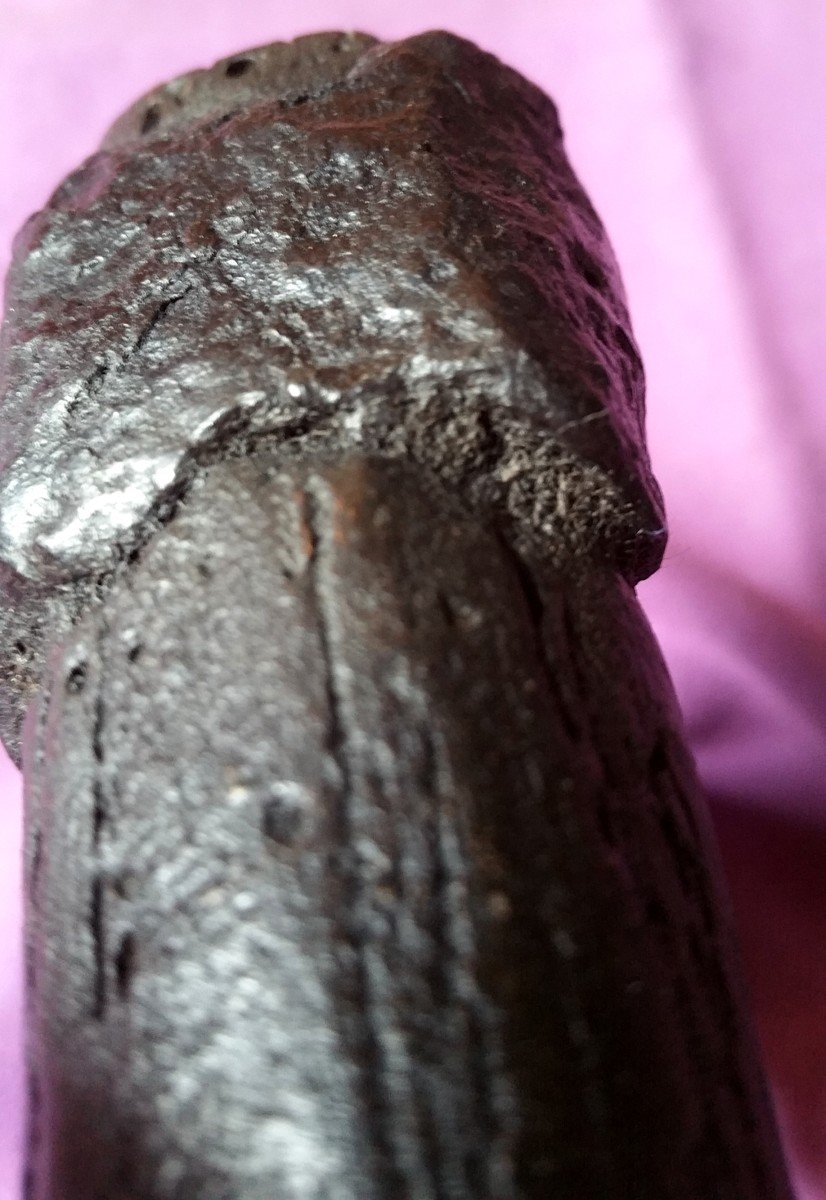
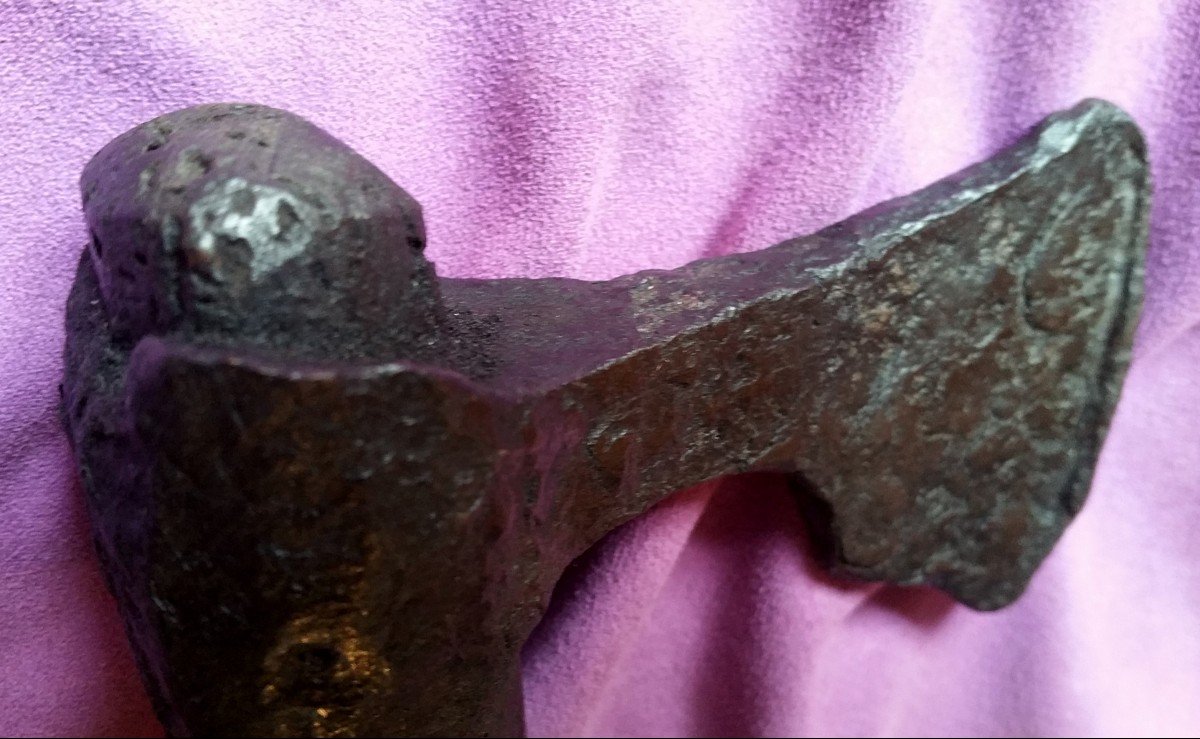
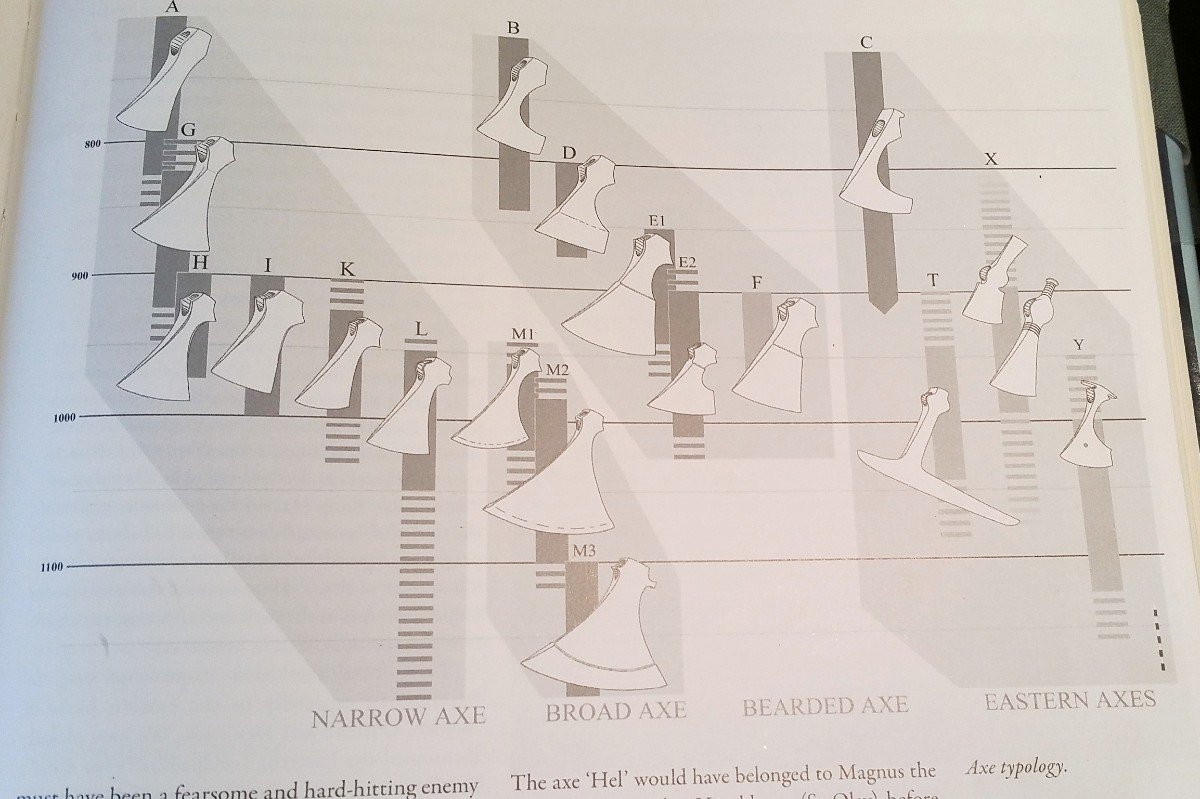
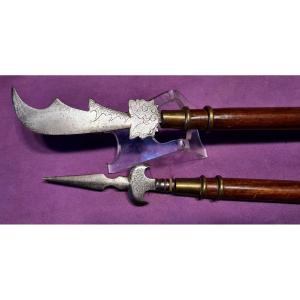



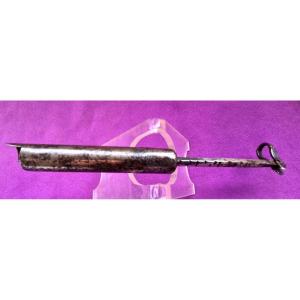





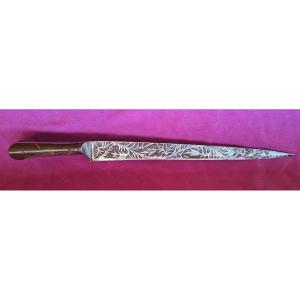




 Le Magazine de PROANTIC
Le Magazine de PROANTIC TRÉSORS Magazine
TRÉSORS Magazine Rivista Artiquariato
Rivista Artiquariato
